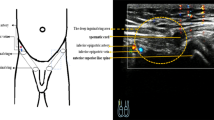Abstract
We investigated the prevalence of hematospermia among the 161,258 men with ≥18 years old, presenting to outpatient clinics with urologic complaints, between January 2003 and December 2017. We also recorded underlying causes of hematospermia to determine frequency of genitourinary cancer in 342 men who presented with hematospermia. Further evaluations such as urine/semen culture, Meares–Stamey four glass test, transrectal/scrotal ultrasound, pelvic magnetic resonance imaging (MRI), cystourethroscopy, and prostate biopsy were performed in the presence of additional symptoms and findings or recurrence of hematospermia after treatment of patients with monosymptomatic hematospermia. The prevalence of hematospermia was detected as 0.21% (342/161,258) among the urological patients. The mean age of the patients was 45.05 ± 14.04 years (range 18–85), and the median duration of hematospermia was 15 days (range 1–7200). In 306 (89.5%) of the patients, hematospermia was resolved after medical therapy for infections/inflammations, surgery for ductal obstruction and cysts, prostate and testicular cancer. However, 36 (10.5%) had persistent hematospermia. The most relevant etiologic cause of hematospermia was inflammation/infections in 169 patients (49.4%), and genitourinary cancers were detected in only 11 patients (3.2%) as prostate cancer in 8 and testicular cancer in 3. Hematospermia is seen frequently due to inflammatory or infectious causes, and is rarely associated with genitourinary cancer. However, genitourinary cancers should be kept in mind in the differential diagnosis of patients with recurrent/persistent hematospermia and associated symptoms, such as hematuria, lower urinary tract symptom, and scrotal pain/swelling.
This is a preview of subscription content, access via your institution
Access options
Subscribe to this journal
Receive 8 print issues and online access
$259.00 per year
only $32.38 per issue
Buy this article
- Purchase on Springer Link
- Instant access to full article PDF
Prices may be subject to local taxes which are calculated during checkout



Similar content being viewed by others
References
Sivanandan S, Wijayarathna SN, Balagobi B, Kumara MGSR, Ambegoda ALAMC, Abeygunasekera AM. A prospective study on aetiology and outcome of haemospermia from a urology unit in Sri Lanka. J Clin Urol. 2019;12:280–4.
Munkelwitz R, Krasnokutsky S, Lie J, Shah SM, Bayshtok J, Khan SA. Current perspectives on hematospermia: a review. J Androl 1997;18:6–14.
Kumar AA, Zachariah KK, Dorkin TJ. Is there any value investigating persistent haematospermia? Results of a 12-year prospective study. Br J Med Surg Urol. 2011;4:202–26.
Furuya S, Masumori N, Takayanagi A. Natural history of hematospermia in 189 Japanese men. Int J Urol. 2016;23:934–40.
Brierley JD, Gospodarowicz MK, Wittekind C. The TNM Classification of Malignant Tumours. 8th ed. Oxford: Wiley Blackwell; 2017.
Ahmad I, Krishna NS. Hemospermia. J Urol. 2007;177:1613–8.
Yagci C, Kupeli S, Tok C, Fitoz S, Baltaci S, Gogus O. Efficacy of transrectal ultrasonography in the evaluation of hematospermia. Clin Imaging. 2004;28:286–90.
Manoharan M, Ayyathurai R, Nieder A, Soloway MS. Hemospermia following transrectal ultrasound-guided prostate biopsy: a prospective study. Prostate Cancer Prostatic Dis. 2007;10:283–7.
Saracoglu M, Ozturk H, Duran A, Atalay S. Effect of microorganisms on etiology of hematospermia. Arch Ital Urol Androl. 2015;87:80–82.
Zargooshi J, Nourizad S, Vaziri S, Nikbakht MR, Almasi A, Ghadiri K, et al. Hemospermia: long-term outcome in 165 patients. Int J Impot Res. 2013;26:83–86.
Han M, Brannigan RE, Antenor JA, Roehl KA, Catalona WJ. Association of hemospermia with prostate cancer. J Urol. 2004;172:2189–92.
Mahmud SM. Re: association of hemaspermia with prostate cancer. J Urol. 2005;174:789.
Ng YH, Seeley JP, Smith G. Haematospermia as a presenting symptom: outcomes of investigation in 300 men. Surgeon. 2013;11:35–38.
Maheshkumar P, Otite U, Gordon S, Berney DM, Nargund VH. Testicular tumor presenting as hematospermia. J Urol. 2001;165:188.
Vilandt J, Sønksen J, Mikines K, Torp-Pedersen S, Colstrup H. Seminoma in the testes associated with haemospermia. BJU Int. 2002;89:633.
Beji S, Hoejgaard M, Lyngdorf P. Seminoma in the testis presenting as hemospermia. Case Rep. Nephrol Urol. 2012;2:135–7.
Eken A, Izol V, Aridogan IA, Erdogan S, Acıkalın A, Tansug Z. An unusual cause of hematospermia: primary adenocarcinoma of the seminal vesicle. Can Urol Assoc J. 2012;6:E259–62.
Papoutsoglou N, Burger M, Riedmiller H. Persistent painless hemospermia due to metastatic melanoma of the right seminal vesicle. BMC Urol. 2013;13:1–4.
Author information
Authors and Affiliations
Corresponding author
Ethics declarations
Conflict of interest
The authors declare that they have no conflict of interest.
Additional information
Publisher’s note Springer Nature remains neutral with regard to jurisdictional claims in published maps and institutional affiliations.
Rights and permissions
About this article
Cite this article
Efesoy, O., Çayan, S., Aşcı, R. et al. Hematospermia is rarely related to genitourinary cancer: lessons learned from 15 years of experience with 342 cases. Int J Impot Res 33, 627–633 (2021). https://doi.org/10.1038/s41443-020-0330-9
Received:
Revised:
Accepted:
Published:
Issue Date:
DOI: https://doi.org/10.1038/s41443-020-0330-9



